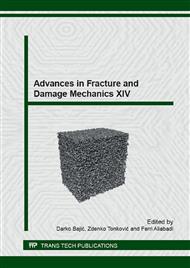p.105
p.109
p.113
p.117
p.121
p.125
p.129
p.133
p.137
Pounding between Inelastic Three-Storey Buildings under Seismic Excitations
Abstract:
Structural interactions between adjacent, insufficiently separated buildings have been repeatedly observed during damaging ground motions. This phenomenon, known as the structural pounding, may result in substantial damage or even total collapse of structures. The aim of the present paper is to show the results of the nonlinear numerical analysis focused on pounding between inelastic three-storey buildings under seismic excitations. The discrete lumped-mass numerical models of two building have been used in the analysis. The results of the study indicate that the response of the lighter and more flexible inelastic building can be substantially influenced by structural interactions, and collisions may even lead to the permanent deformation of the structure. On the other hand, the behaviour of the heavier and stiffer building does not really change considerably during the earthquake. The results of the study also indicate that incorporation of the inelastic behaviour of colliding buildings with different dynamic characteristics is very important for the purposes of accurate numerical modelling of pounding-involved structural response under damaging seismic excitations.
Info:
Periodical:
Pages:
121-124
Citation:
Online since:
September 2015
Authors:
Keywords:
Price:
Сopyright:
© 2016 Trans Tech Publications Ltd. All Rights Reserved
Share:
Citation:


